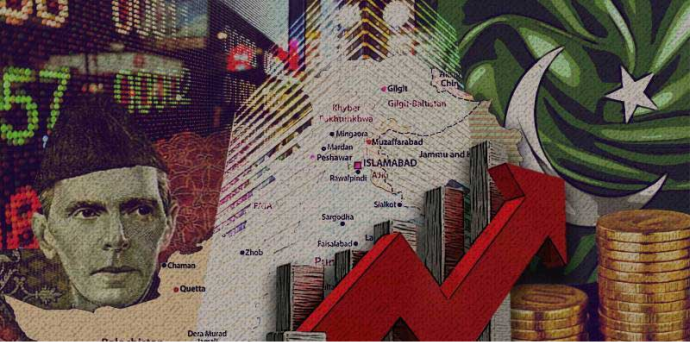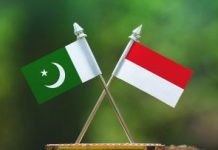Pakistan’s economy continues to face one of the most severe crises in its recent history. The cost of living has surged dramatically, driven primarily by the persistent depreciation of the Pakistani rupee against the US dollar. The rupee has lost over 70 percent of its value in the past few years, making it one of the weakest currencies in the region. Compared to neighboring countries such as India, Bangladesh, and even war-torn Afghanistan, Pakistan’s exchange rate and inflation levels present an alarming picture of economic instability and policy paralysis.
The sharp decline in the rupee-dollar parity lies at the heart of Pakistan’s inflation crisis. Every drop in the rupee’s value translates into a surge in the prices of essential goods, from fuel and food to medicines and machinery. Since Pakistan relies heavily on imports for raw materials, energy, and even basic commodities, the weakening rupee has multiplied costs across all sectors of the economy. While other regional economies have managed to stabilize their currencies through sound fiscal and export policies, Pakistan has failed to do so. India and Bangladesh, for example, have maintained relatively stable exchange rates due to robust export growth and strong foreign exchange reserves. In contrast, Pakistan’s reserves remain dangerously low, and the country continues to depend on external borrowing to manage its balance of payments. The government’s inability to control the currency slide has eroded public confidence and worsened the inflationary burden on ordinary citizens.
The fundamental cause of Pakistan’s currency weakness is the chronic shortage of exports. The country’s export base remains narrow and undiversified, dominated by low-value textile products. Despite enjoying GSP Plus trade status with the European Union, which offers tariff-free access to many goods, Pakistan has failed to fully benefit from this opportunity. The primary reason lies in the limited range and inconsistent quality of its exports. Foreign buyers have repeatedly complained about discrepancies between samples and actual shipments, delays in delivery, and non-compliance with international standards. As a result, Pakistan has lost credibility in key export markets. Competing economies like Bangladesh have built global reputations for reliability, quality, and innovation, allowing them to attract international buyers and expand their manufacturing base. Pakistan, on the other hand, has not been able to match that performance. This weak export performance directly affects foreign exchange inflows, placing pressure on the rupee. Without significant export earnings, Pakistan must rely on remittances and external loans to bridge its current account gap — a model that is neither sustainable nor growth-oriented.
Equally troubling is the government’s apparent inaction in addressing the underlying causes of the crisis. Successive administrations have failed to implement structural reforms or long-term industrial policies to boost competitiveness. Bureaucratic inefficiencies, corruption, and inconsistent economic decisions have deterred both domestic and foreign investors. Pakistan’s business community continues to face an unpredictable regulatory environment, arbitrary taxation, and energy shortages. The absence of a clear policy direction has left investors uncertain about the country’s future economic trajectory. While other regional economies have streamlined their business processes and incentivized exports, Pakistan remains mired in red tape and policy confusion.
Another major obstacle to economic revival is the deteriorating law and order situation. Incidents of terrorism, political unrest, and street protests have further undermined investor confidence. A business-friendly environment requires not only stable policies but also a sense of security and predictability. Unfortunately, Pakistan has struggled to provide either. Foreign investors, including those from China, traditionally Pakistan’s closest economic ally, have grown increasingly cautious. Despite being part of the multi-billion-dollar China-Pakistan Economic Corridor, new Chinese investments have slowed considerably. Beijing appears reluctant to expand its footprint amid growing concerns about Pakistan’s security environment and shifting geopolitical alignments. Islamabad’s increasing tilt toward Washington has also introduced an element of uncertainty in its relations with China, which remains a key source of financing and infrastructure development.
The impact of these economic challenges on ordinary Pakistanis has been devastating. Over the past two years, poverty levels have risen sharply as inflation outpaces income growth. According to various independent assessments, millions of people have been pushed below the poverty line, with food insecurity becoming a serious issue in both urban and rural areas. Economic growth remains stagnant, hovering around two percent — far below what is needed to absorb the country’s growing labor force. Manufacturing output has declined, industrial units are closing, and unemployment is on the rise. The lack of investment in education, innovation, and technology further limits the potential for economic diversification.
To restore stability and promote sustainable growth, Pakistan needs a comprehensive and coordinated strategy that addresses both immediate and long-term challenges. The foremost priority must be stabilizing the rupee by boosting exports and reducing import dependency. This requires a concerted effort to improve product quality, strengthen export industries, and enforce strict compliance with international standards. Equally important is the creation of a business-friendly environment that ensures transparency, policy consistency, and legal protection for investors. Strengthening governance, reducing corruption, and improving institutional efficiency are essential steps in this direction. Law and order must also be given top priority. Without internal security, no amount of economic reform can succeed. The government must engage constructively with all regional partners, including China, to rebuild investor trust and revive key projects under CPEC.
Pakistan’s economic difficulties are not the result of a single factor but of years of mismanagement, policy inconsistency, and neglect of fundamental reforms. The depreciating rupee is a symptom of deeper structural weaknesses — weak exports, poor governance, and a declining investment climate. Unless decisive action is taken to address these issues, the crisis will only deepen, pushing the country further into economic stagnation and social distress. A coherent, reform-driven, and inclusive economic policy is urgently needed to reverse the downward spiral. The time for political rhetoric has passed; what Pakistan now requires is leadership, vision, and discipline to rebuild its economy and restore hope for its people.

















